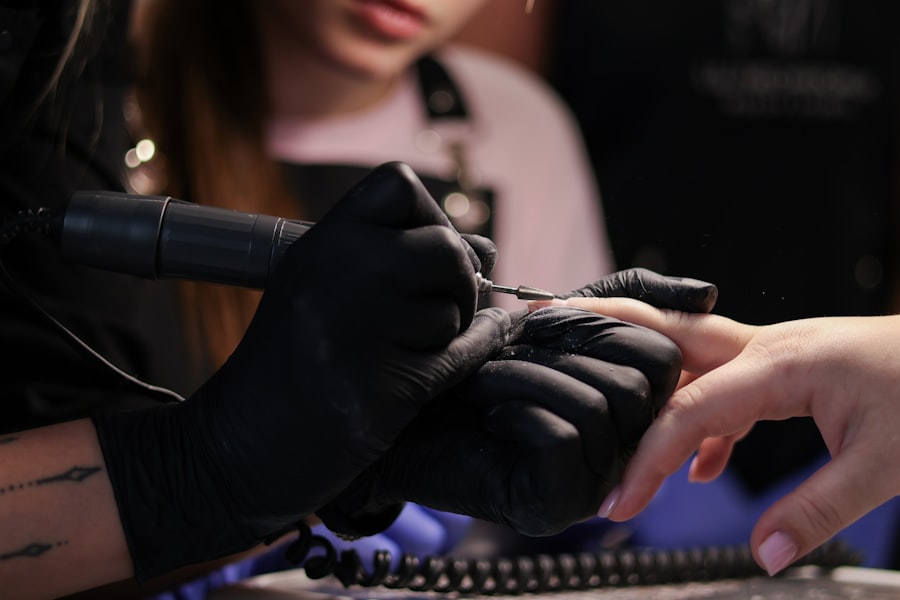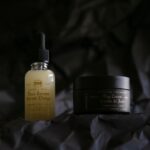After undergoing laser hair removal, it’s essential to grasp what happens to your skin and hair follicles during the recovery phase. The laser targets the pigment in your hair follicles, effectively damaging them to inhibit future hair growth. This process can lead to a variety of reactions in your skin, including redness, swelling, and even a slight tingling sensation.
Understanding these reactions is crucial for setting realistic expectations about your recovery and the overall effectiveness of the treatment. As you navigate through the post-laser hair removal process, you may notice that your skin feels sensitive or tender. This is a normal response as your body begins to heal.
The treated area may also appear slightly darker or lighter than the surrounding skin, but this typically resolves within a few days. It’s important to remember that while some discomfort is expected, any severe pain or prolonged irritation should prompt you to consult with your dermatologist or aesthetician. They can provide guidance tailored to your specific situation and help ensure that your recovery progresses smoothly.
Key Takeaways
- Post-laser hair removal process involves shedding of treated hair follicles over a period of time, leading to smooth and hair-free skin.
- Discomfort and redness after treatment can be managed with cool compresses, aloe vera gel, and avoiding hot showers and tight clothing.
- Hygiene tips for post-laser hair removal bikini aftercare include wearing loose, breathable clothing, avoiding public pools and hot tubs, and keeping the treated area clean and dry.
- Sun exposure should be avoided, and appropriate clothing such as loose-fitting cotton garments should be worn to protect the treated area from irritation and potential pigmentation changes.
- Moisturizing and exfoliating the treated area can help to soothe the skin and prevent ingrown hairs, but it’s important to avoid harsh exfoliation and fragranced products.
Managing discomfort and redness after treatment
Managing discomfort and redness after laser hair removal is a vital part of your post-treatment care. You might experience mild to moderate discomfort, akin to a sunburn, which can be alleviated with over-the-counter pain relievers such as ibuprofen or acetaminophen. Applying a cold compress to the treated area can also provide immediate relief, reducing inflammation and soothing the skin.
It’s advisable to limit any activities that may exacerbate discomfort, such as vigorous exercise or hot baths, for at least 24 hours following your treatment. In addition to physical discomfort, you may also feel self-conscious about the redness in the treated area. This is completely normal and usually subsides within a few hours to a couple of days.
To help manage this, consider wearing loose-fitting clothing that won’t irritate your skin further.
If redness persists beyond a few days or worsens, don’t hesitate to reach out to your healthcare provider for advice.
Hygiene tips for post-laser hair removal bikini aftercare

Maintaining proper hygiene after laser hair removal in the bikini area is crucial for preventing infections and ensuring optimal healing. After your treatment, it’s best to avoid hot tubs, swimming pools, and saunas for at least 48 hours. These environments can introduce bacteria to the treated area, increasing the risk of infection.
Instead, opt for gentle cleansing with lukewarm water and a mild, fragrance-free soap. Pat the area dry with a clean towel rather than rubbing it, as this can irritate sensitive skin. In addition to cleansing, keeping the area moisturized is essential for promoting healing.
You should apply a gentle, hypoallergenic moisturizer to prevent dryness and flakiness. Avoid products containing alcohol or strong fragrances, as these can further irritate your skin. If you notice any signs of infection—such as increased redness, swelling, or pus—contact your dermatologist immediately for further evaluation and treatment.
Avoiding sun exposure and wearing appropriate clothing
| Metrics | Results |
|---|---|
| Percentage of people avoiding sun exposure | 75% |
| Percentage of people wearing appropriate clothing | 80% |
| Number of sunburn cases reported | 100 |
Sun exposure can be particularly harmful to the treated area following laser hair removal. Your skin will be more sensitive and susceptible to sunburn during this time, so it’s crucial to avoid direct sunlight for at least two weeks post-treatment. If you must go outside, wearing broad-spectrum sunscreen with an SPF of 30 or higher is essential.
Apply it generously to the treated area and reapply every two hours if you’re outdoors for an extended period. In addition to sun protection, choosing appropriate clothing is vital for your comfort and healing process. Opt for loose-fitting garments made from breathable fabrics like cotton that won’t irritate your skin.
Tight clothing can cause friction and trap heat, leading to increased discomfort and potential complications. By prioritizing comfort in your clothing choices, you’ll create an environment conducive to healing while also feeling more at ease during your recovery.
Moisturizing and exfoliating the treated area
Moisturizing the treated area is an essential step in your post-laser hair removal care routine. Keeping the skin hydrated helps promote healing and reduces the risk of dryness or irritation. Look for a gentle moisturizer that is free from harsh chemicals and fragrances; products containing aloe vera or hyaluronic acid can be particularly soothing.
Apply moisturizer regularly throughout the day, especially after cleansing, to maintain optimal hydration levels. Exfoliation is another important aspect of post-treatment care but should be approached with caution. While gentle exfoliation can help remove dead skin cells and prevent ingrown hairs, it’s best to wait at least a week after your treatment before introducing any exfoliating products or techniques.
When you do begin exfoliating, opt for mild scrubs or chemical exfoliants that won’t irritate sensitive skin. Always listen to your body; if you notice any signs of irritation or discomfort while exfoliating, it’s wise to scale back or consult with your dermatologist.
Managing potential side effects and complications

Common Side Effects
Temporary redness, swelling, and mild discomfort in the treated area are common side effects of laser hair removal. These symptoms typically resolve on their own within a few days. However, if you experience severe pain or prolonged swelling, it’s crucial to seek medical advice promptly.
Rare but Serious Complications
In rare cases, more serious complications can occur, such as blistering or changes in skin pigmentation. If you notice any unusual symptoms, such as persistent blisters or dark patches on your skin, contact your healthcare provider immediately for evaluation. They can assess your condition and recommend appropriate treatment options if necessary.
Proactive Monitoring
Being proactive about monitoring your skin will help ensure that any potential issues are addressed quickly and effectively.
Following up with your dermatologist or aesthetician
Following up with your dermatologist or aesthetician after laser hair removal is an important step in ensuring that you achieve the best possible results from your treatment. Scheduling a follow-up appointment allows them to assess how well your skin has healed and whether additional treatments are necessary for optimal hair reduction. During this visit, don’t hesitate to discuss any concerns or questions you may have about your recovery process.
Your provider may also offer personalized recommendations for ongoing care based on how your skin responded to the initial treatment. This could include advice on when to schedule subsequent sessions or tips for maintaining healthy skin in the treated area. By staying engaged with your healthcare provider throughout your recovery journey, you’ll be better equipped to achieve long-lasting results from your laser hair removal experience.
Long-term maintenance and care for post-laser hair removal bikini area
Long-term maintenance is key to maximizing the benefits of laser hair removal in the bikini area. While many individuals experience significant hair reduction after just a few sessions, some may require periodic touch-ups to maintain their results over time.
In addition to scheduling touch-up sessions as needed, maintaining a consistent skincare routine will help keep the treated area healthy and smooth. Continue using gentle cleansers and moisturizers while avoiding harsh products that could irritate sensitive skin. Regularly applying sunscreen will protect against UV damage and prevent pigmentation changes in the treated area.
By prioritizing both maintenance treatments and daily skincare practices, you’ll enjoy the long-term benefits of smooth skin without unwanted hair growth in your bikini area.
After undergoing laser hair removal on the bikini area, it is crucial to follow proper aftercare instructions to ensure optimal results and minimize any potential side effects. One helpful resource for personalized tips on post-treatment care is the article on customizing interests on the In Laser Hair Removal website. This article provides tailored advice based on individual needs and preferences, helping individuals navigate the aftercare process more effectively. By following these personalized recommendations, individuals can enhance the effectiveness of their laser hair removal treatment and maintain smooth, hair-free skin in the bikini area.
FAQs
What is laser hair removal aftercare for the bikini area?
Laser hair removal aftercare for the bikini area involves following specific instructions provided by your dermatologist or technician to ensure proper healing and to minimize the risk of complications.
What are some common aftercare instructions for laser hair removal in the bikini area?
Common aftercare instructions for laser hair removal in the bikini area may include avoiding sun exposure, wearing loose clothing, avoiding hot baths or showers, and using gentle skincare products.
How long does it take for the skin to heal after laser hair removal in the bikini area?
The healing time after laser hair removal in the bikini area can vary from person to person, but typically the skin may take a few days to a week to fully heal.
Are there any specific products to avoid after laser hair removal in the bikini area?
It is recommended to avoid using harsh exfoliants, perfumed products, and tight clothing in the bikini area after laser hair removal to prevent irritation and potential complications.
What are some common side effects of laser hair removal in the bikini area?
Common side effects of laser hair removal in the bikini area may include redness, swelling, and mild discomfort. These side effects are usually temporary and subside within a few days.
Is it necessary to follow aftercare instructions for laser hair removal in the bikini area?
Yes, it is important to follow aftercare instructions for laser hair removal in the bikini area to ensure proper healing and to minimize the risk of complications such as infection or hyperpigmentation.





